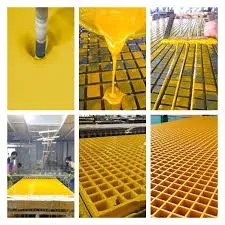
-
 Afrikaans
Afrikaans -
 Albanian
Albanian -
 Amharic
Amharic -
 Arabic
Arabic -
 Armenian
Armenian -
 Azerbaijani
Azerbaijani -
 Basque
Basque -
 Belarusian
Belarusian -
 Bengali
Bengali -
 Bosnian
Bosnian -
 Bulgarian
Bulgarian -
 Catalan
Catalan -
 Cebuano
Cebuano -
 China
China -
 China (Taiwan)
China (Taiwan) -
 Corsican
Corsican -
 Croatian
Croatian -
 Czech
Czech -
 Danish
Danish -
 Dutch
Dutch -
 English
English -
 Esperanto
Esperanto -
 Estonian
Estonian -
 Finnish
Finnish -
 French
French -
 Frisian
Frisian -
 Galician
Galician -
 Georgian
Georgian -
 German
German -
 Greek
Greek -
 Gujarati
Gujarati -
 Haitian Creole
Haitian Creole -
 hausa
hausa -
 hawaiian
hawaiian -
 Hebrew
Hebrew -
 Hindi
Hindi -
 Miao
Miao -
 Hungarian
Hungarian -
 Icelandic
Icelandic -
 igbo
igbo -
 Indonesian
Indonesian -
 irish
irish -
 Italian
Italian -
 Japanese
Japanese -
 Javanese
Javanese -
 Kannada
Kannada -
 kazakh
kazakh -
 Khmer
Khmer -
 Rwandese
Rwandese -
 Korean
Korean -
 Kurdish
Kurdish -
 Kyrgyz
Kyrgyz -
 Lao
Lao -
 Latin
Latin -
 Latvian
Latvian -
 Lithuanian
Lithuanian -
 Luxembourgish
Luxembourgish -
 Macedonian
Macedonian -
 Malgashi
Malgashi -
 Malay
Malay -
 Malayalam
Malayalam -
 Maltese
Maltese -
 Maori
Maori -
 Marathi
Marathi -
 Mongolian
Mongolian -
 Myanmar
Myanmar -
 Nepali
Nepali -
 Norwegian
Norwegian -
 Norwegian
Norwegian -
 Occitan
Occitan -
 Pashto
Pashto -
 Persian
Persian -
 Polish
Polish -
 Portuguese
Portuguese -
 Punjabi
Punjabi -
 Romanian
Romanian -
 Russian
Russian -
 Samoan
Samoan -
 Scottish Gaelic
Scottish Gaelic -
 Serbian
Serbian -
 Sesotho
Sesotho -
 Shona
Shona -
 Sindhi
Sindhi -
 Sinhala
Sinhala -
 Slovak
Slovak -
 Slovenian
Slovenian -
 Somali
Somali -
 Spanish
Spanish -
 Sundanese
Sundanese -
 Swahili
Swahili -
 Swedish
Swedish -
 Tagalog
Tagalog -
 Tajik
Tajik -
 Tamil
Tamil -
 Tatar
Tatar -
 Telugu
Telugu -
 Thai
Thai -
 Turkish
Turkish -
 Turkmen
Turkmen -
 Ukrainian
Ukrainian -
 Urdu
Urdu -
 Uighur
Uighur -
 Uzbek
Uzbek -
 Vietnamese
Vietnamese -
 Welsh
Welsh -
 Bantu
Bantu -
 Yiddish
Yiddish -
 Yoruba
Yoruba -
 Zulu
Zulu
Jan . 20, 2025 03:42
Back to list
Clarifiers & Settlers
Fiberglass tanks have garnered immense attention in recent years, primarily due to their versatility and durability. For industries ranging from chemical storage to wastewater management, the adoption of fiberglass tanks is transforming traditional methodologies and setting a benchmark for storage solutions.
From a sustainability standpoint, fiberglass tanks offer considerable environmental advantages. Their durability means a longer lifecycle, thereby reducing the need for frequent replacements and minimizing waste. Additionally, many fiberglass tanks are manufactured using eco-friendly processes, underscoring the industry's commitment to environmental responsibility. This sustainable approach not only benefits the planet but also aligns with the values of eco-conscious businesses seeking to minimize their carbon footprints. In terms of customization, fiberglass tanks can be molded into a variety of shapes and sizes, allowing for bespoke solutions tailored to specific operational needs. Whether a company requires subterranean storage, vertical tanks for space efficiency, or horizontally configured designs for ease of access, fiberglass offers the flexibility to create the perfect fit. This adaptability makes them a preferred choice for engineers and project planners endeavoring to optimize space and functionality. The credibility of fiberglass tanks is reinforced by their compliance with stringent industry standards. Regulatory bodies often scrutinize storage solutions, and fiberglass tanks frequently meet or exceed these regulatory requirements. Their proven track record in various industrial applications serves as a testament to their reliability. Furthermore, most manufacturers of fiberglass tanks provide comprehensive warranties and after-sales support, ensuring that businesses have access to technical expertise and guidance throughout the tank's lifecycle. In conclusion, investing in fiberglass tanks translates to acquiring a robust, reliable, and eco-friendly storage solution. Their unique combination of durability, resistance to corrosion, thermal efficiency, and customizability makes them unparalleled in their field. For industries looking to enhance their storage capabilities while minimizing operational risks and environmental impact, fiberglass tanks are the superior choice.


From a sustainability standpoint, fiberglass tanks offer considerable environmental advantages. Their durability means a longer lifecycle, thereby reducing the need for frequent replacements and minimizing waste. Additionally, many fiberglass tanks are manufactured using eco-friendly processes, underscoring the industry's commitment to environmental responsibility. This sustainable approach not only benefits the planet but also aligns with the values of eco-conscious businesses seeking to minimize their carbon footprints. In terms of customization, fiberglass tanks can be molded into a variety of shapes and sizes, allowing for bespoke solutions tailored to specific operational needs. Whether a company requires subterranean storage, vertical tanks for space efficiency, or horizontally configured designs for ease of access, fiberglass offers the flexibility to create the perfect fit. This adaptability makes them a preferred choice for engineers and project planners endeavoring to optimize space and functionality. The credibility of fiberglass tanks is reinforced by their compliance with stringent industry standards. Regulatory bodies often scrutinize storage solutions, and fiberglass tanks frequently meet or exceed these regulatory requirements. Their proven track record in various industrial applications serves as a testament to their reliability. Furthermore, most manufacturers of fiberglass tanks provide comprehensive warranties and after-sales support, ensuring that businesses have access to technical expertise and guidance throughout the tank's lifecycle. In conclusion, investing in fiberglass tanks translates to acquiring a robust, reliable, and eco-friendly storage solution. Their unique combination of durability, resistance to corrosion, thermal efficiency, and customizability makes them unparalleled in their field. For industries looking to enhance their storage capabilities while minimizing operational risks and environmental impact, fiberglass tanks are the superior choice.
Next:
Related Products
Latest news
-
Exploring the Benefits of Top Hammer Drifter Rods for Enhanced Drilling PerformanceNewsJun.10,2025
-
High-Precision Fiberglass Winding Machine for GRP/FRP Pipe Production – Reliable & Efficient SolutionsNewsJun.10,2025
-
FRP Pipes & Fittings for Shipbuilding - Corrosion-Resistant & LightweightNewsJun.09,2025
-
Premium FRP Flooring Solutions Durable & Slip-ResistantNewsJun.09,2025
-
Premium Fiberglass Rectangular Tanks Durable & Lightweight SolutionNewsJun.09,2025
-
Tapered Drill String Design Guide Durable Performance & UsesNewsJun.09,2025









